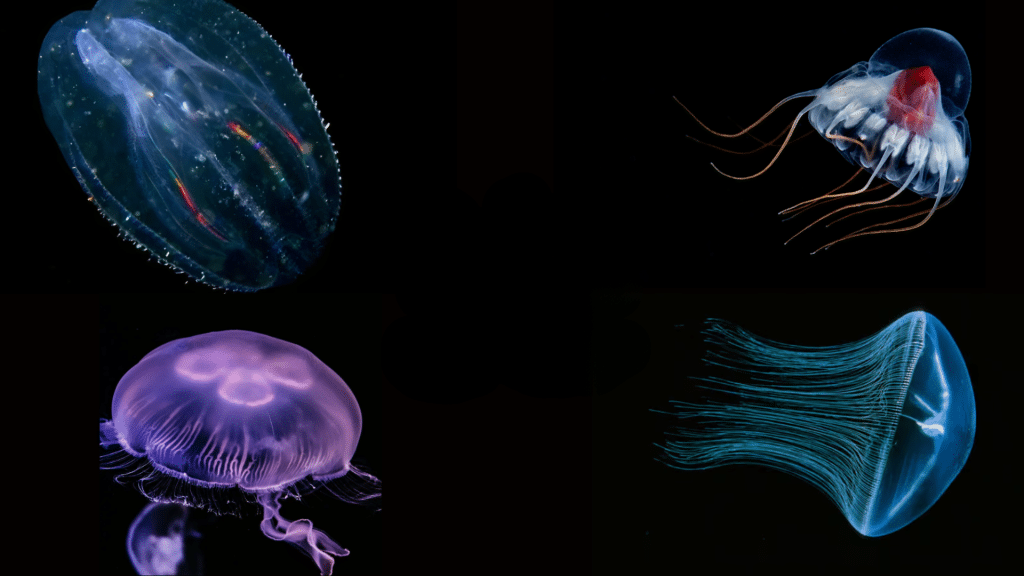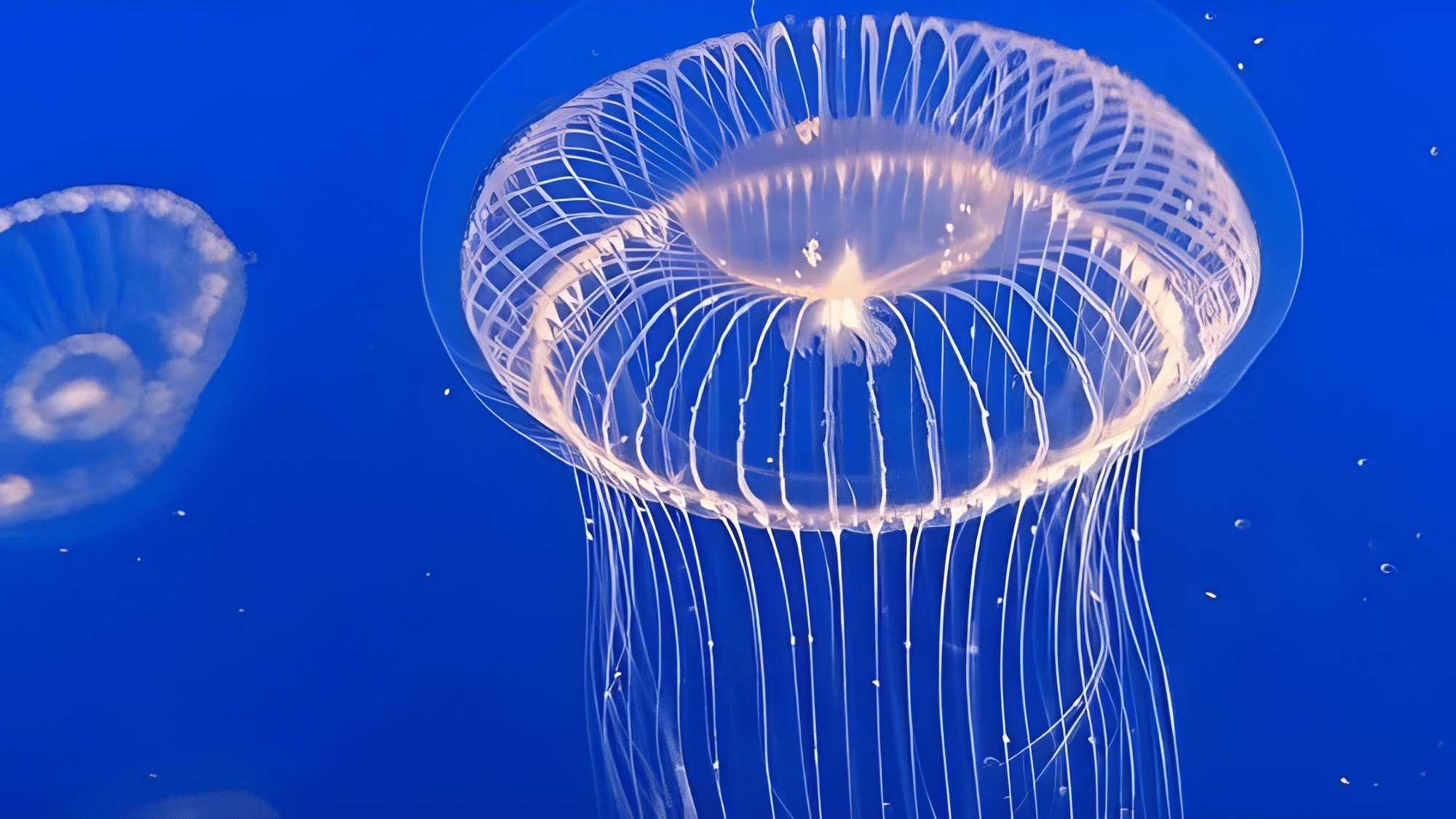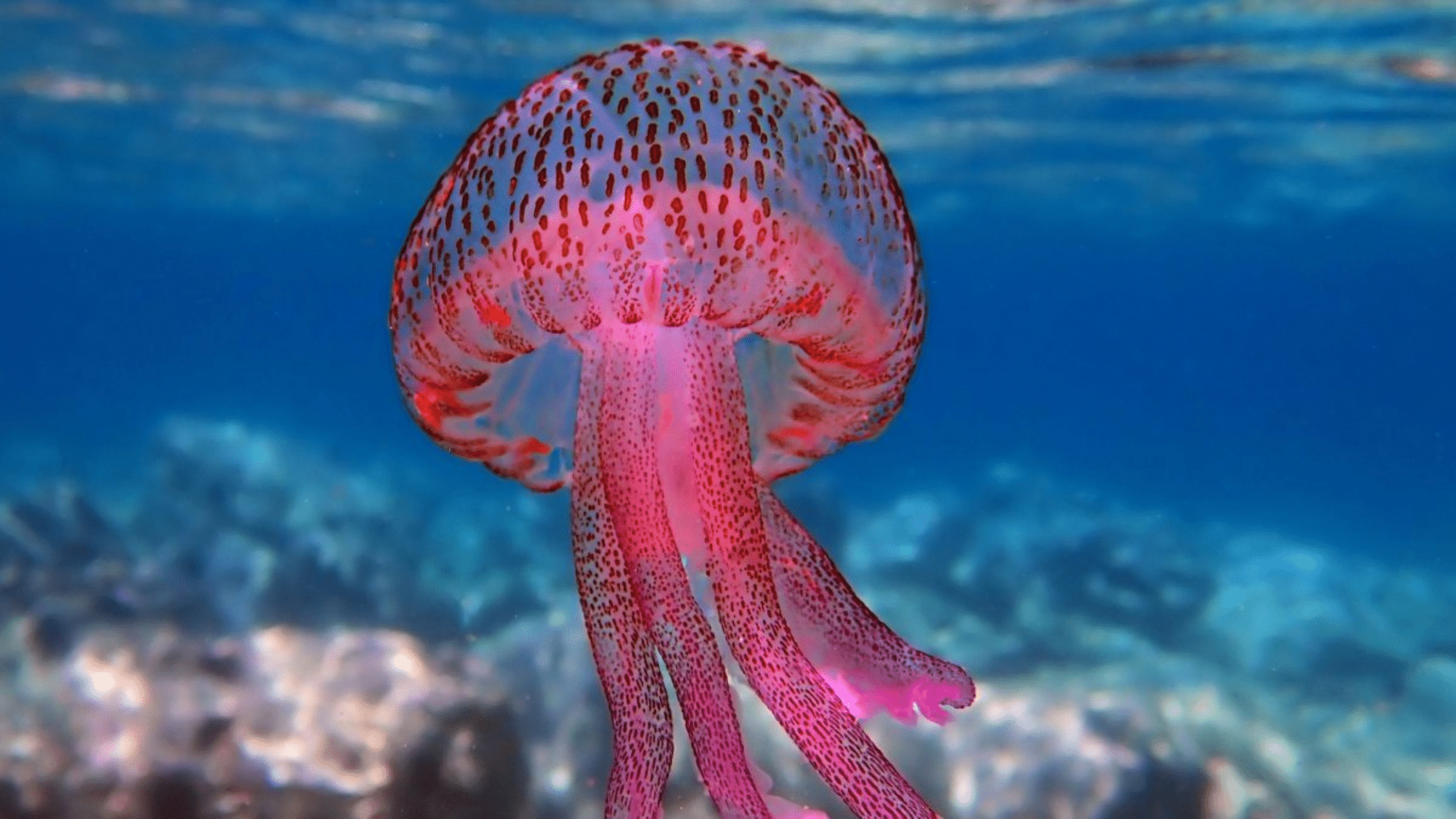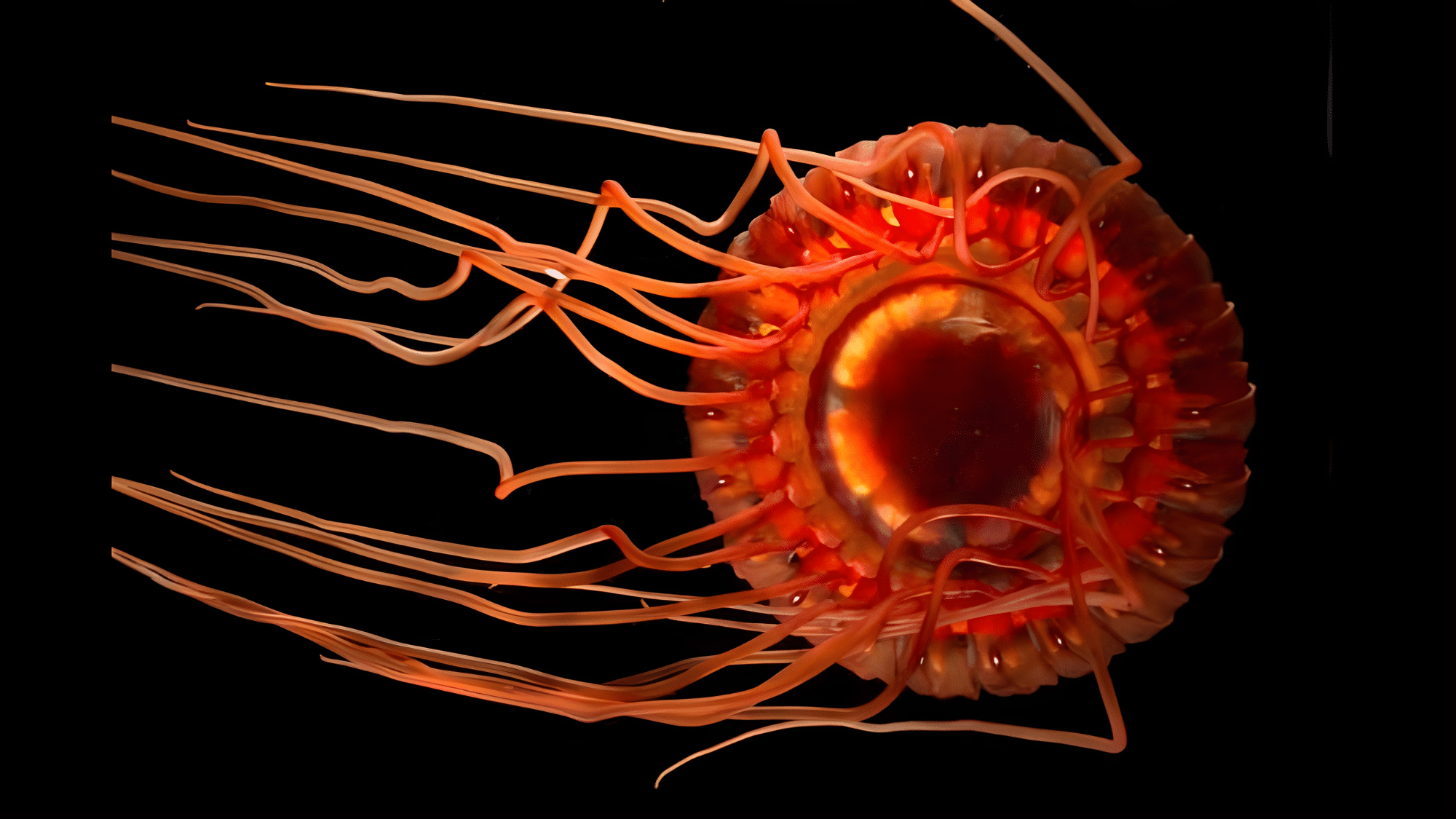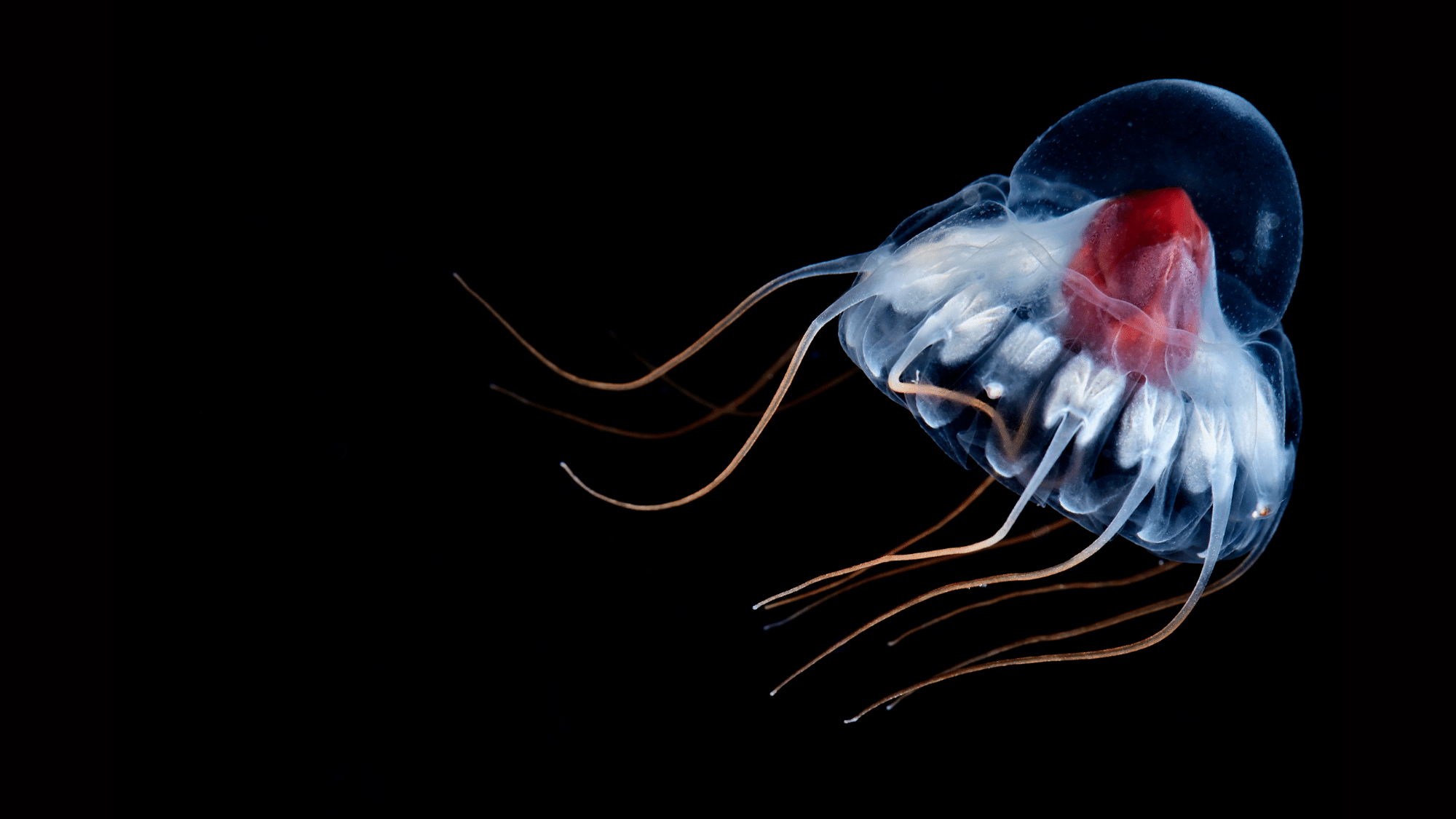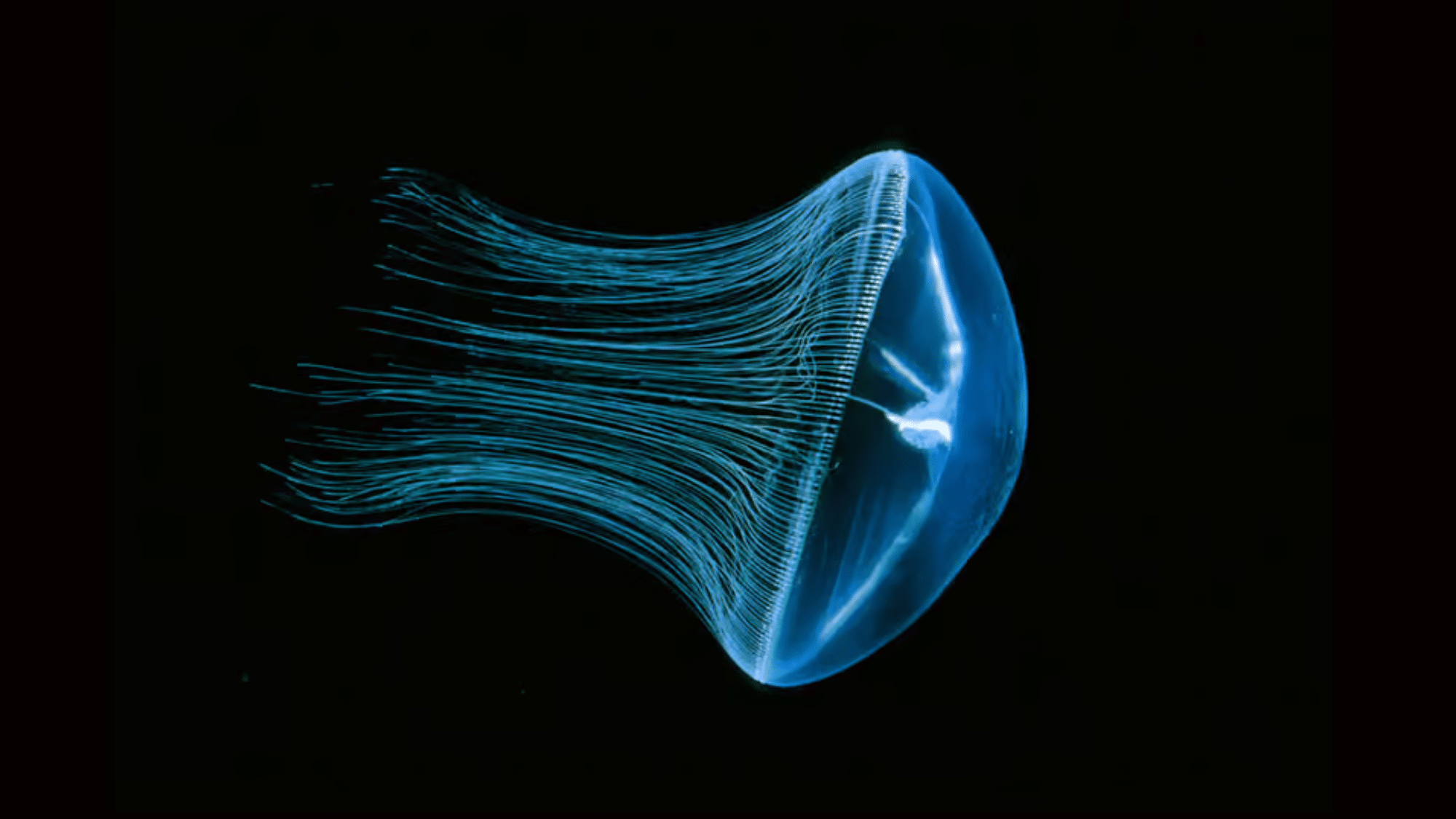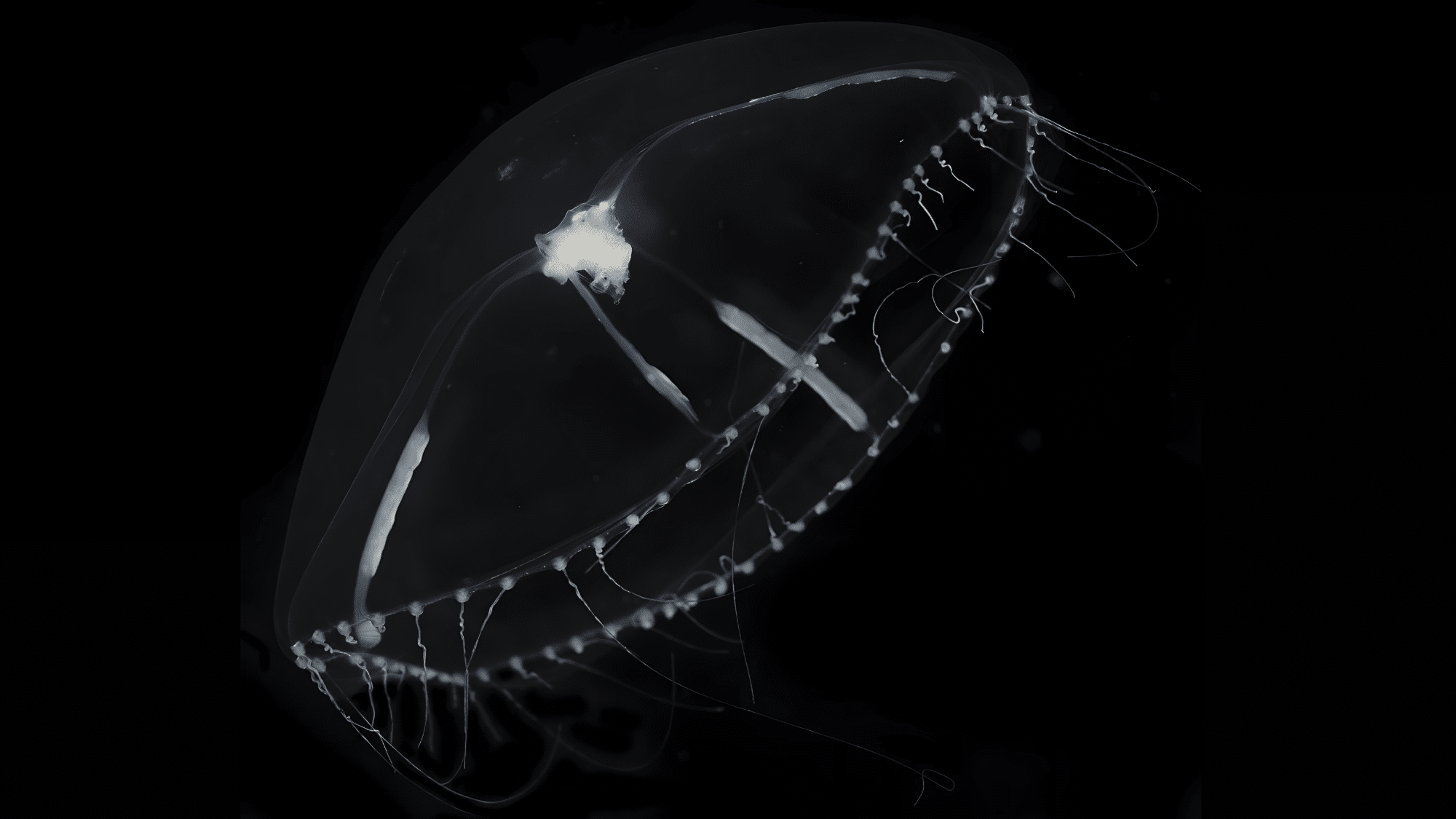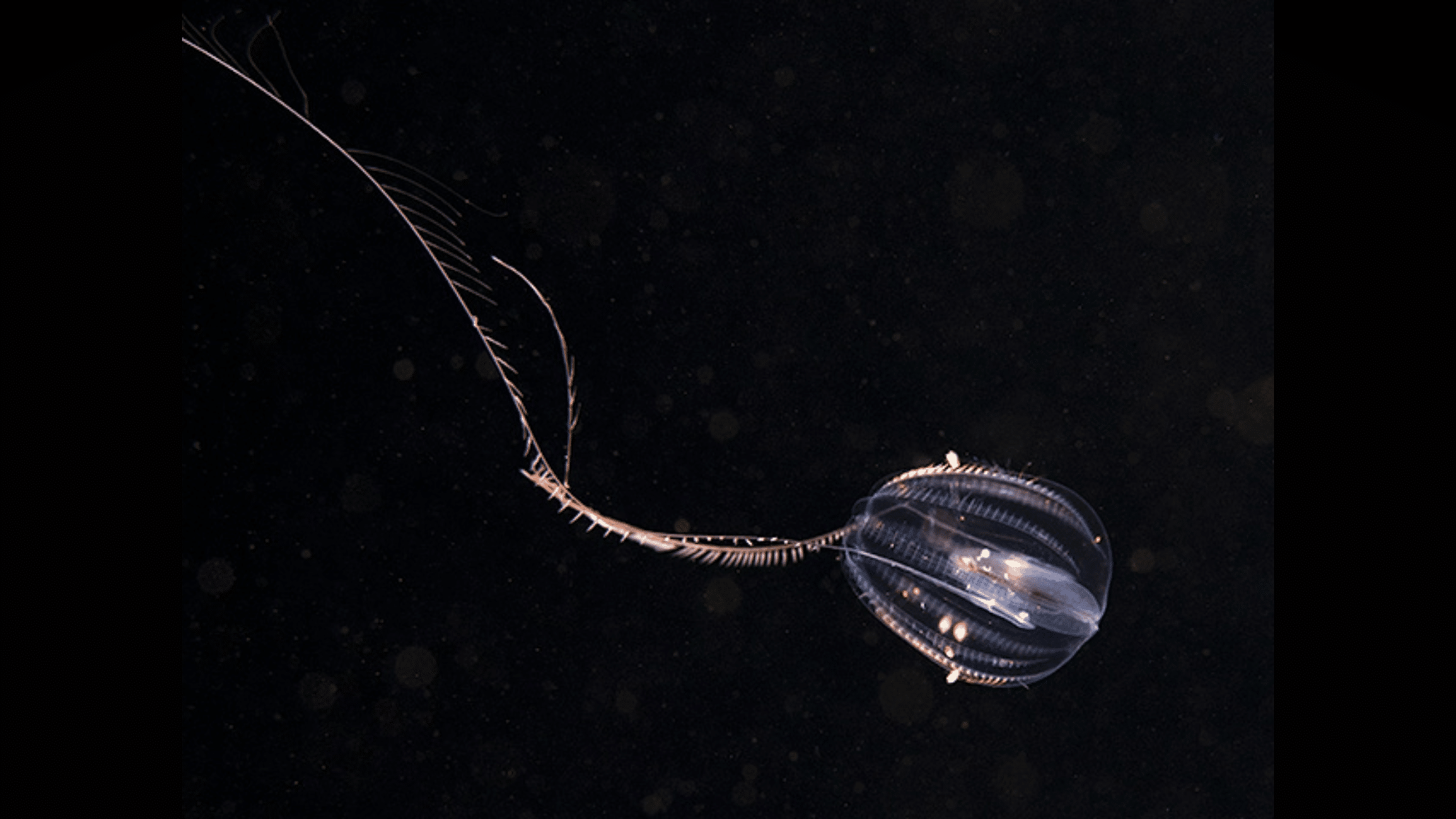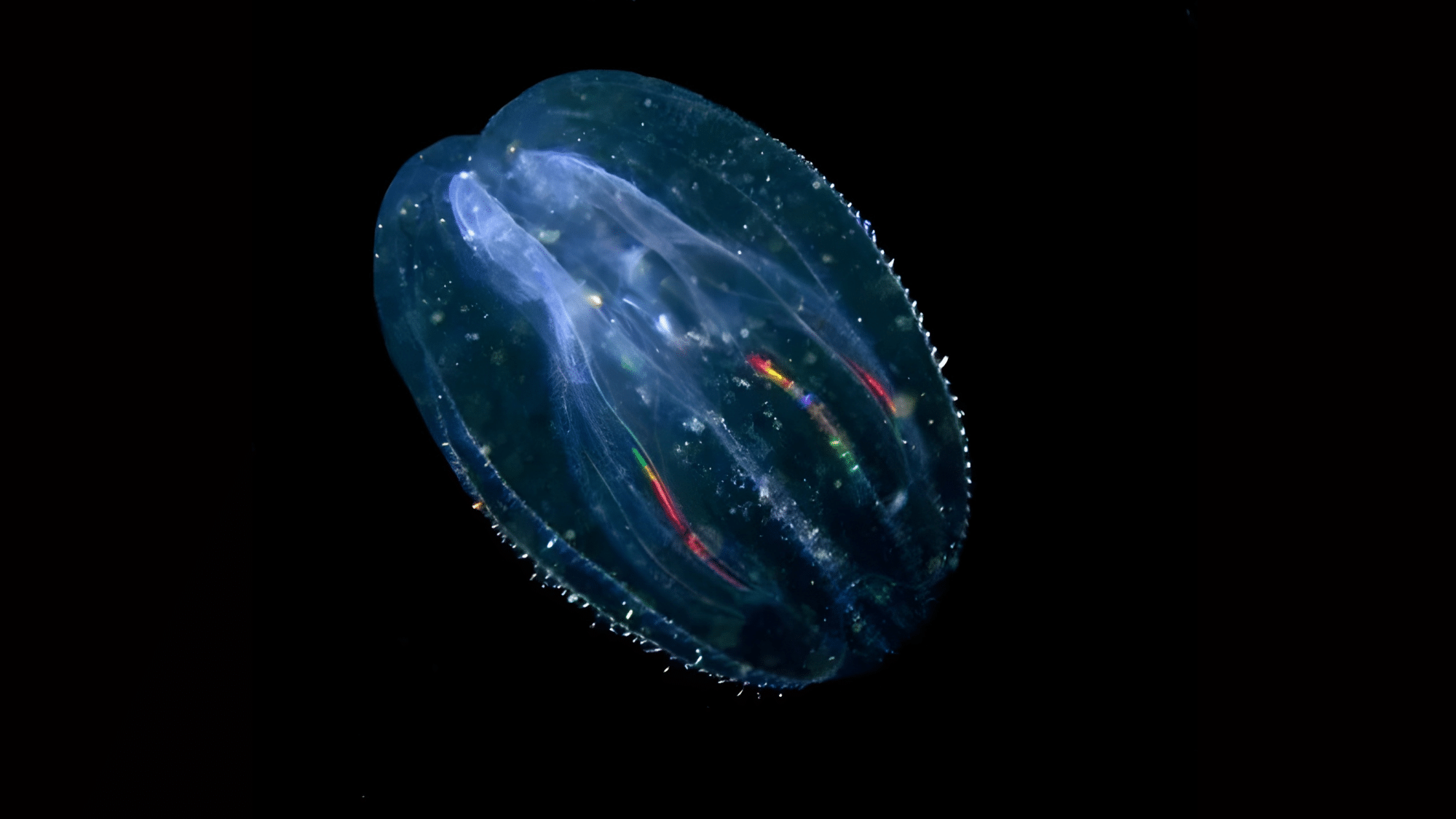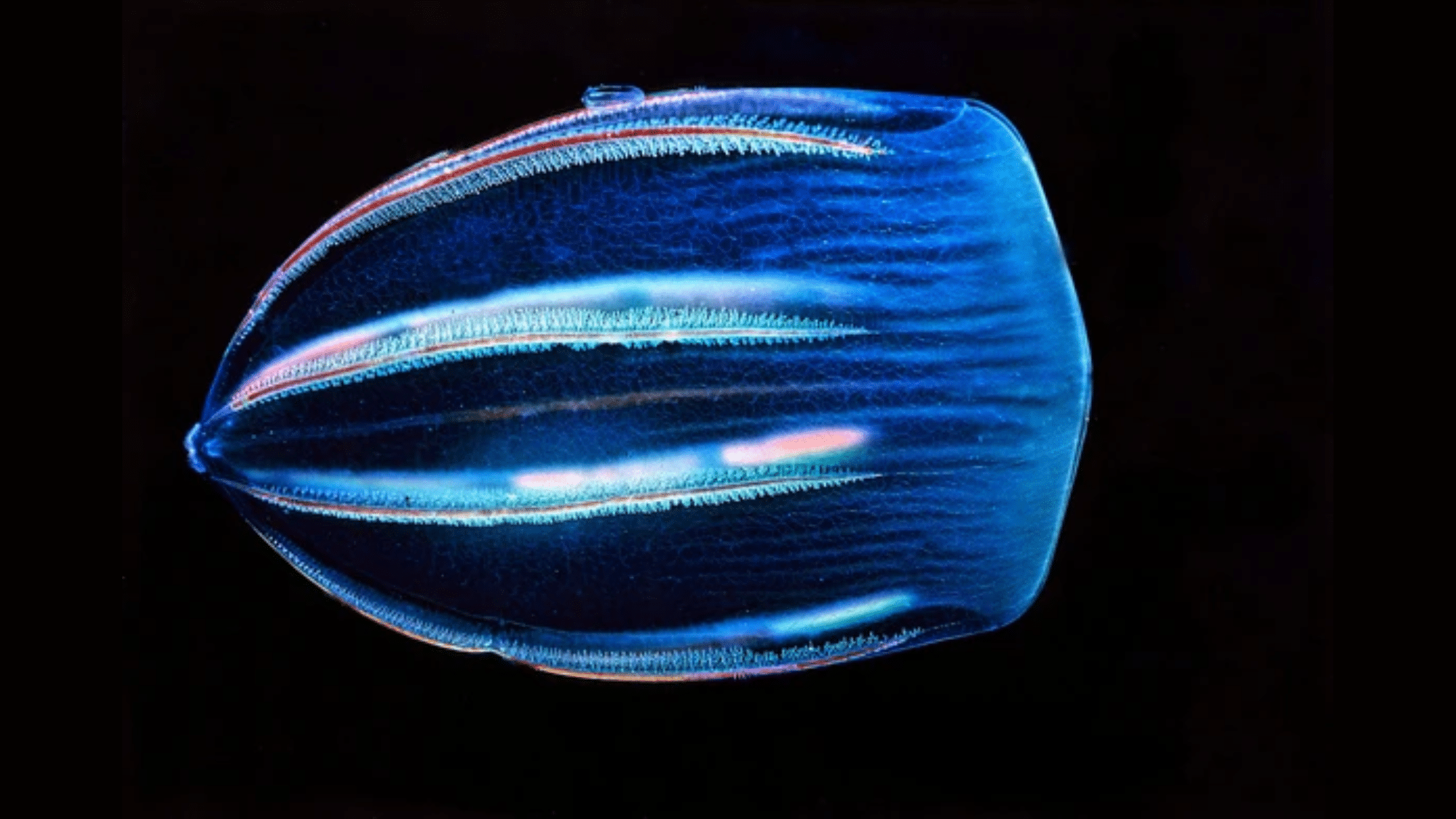Have you ever swum in the ocean at night when suddenly, the water sparkles and glows around you? It’s not magic – it’s jellyfish, nature’s living fairy tale creatures putting on breathtaking light shows.
Around half of all jellyfish species carry their own personal lighting system through bioluminescence.
Think of it as nature’s chemistry set: special chemicals inside their jelly like bodies create beautiful, cold light without generating heat.
These illuminated wanderers have been lighting up our oceans for millions of years, using their glow as a crucial survival tool.
The Science Behind the Glow
Jellyfish create light through a chemical reaction between two molecules, luciferin and luciferase.
When these mix with oxygen, they release energy as light, with luciferin producing the glow and luciferase acting as the catalyst.
This cold light produces almost no heat, unlike human light sources. Nearly all energy is converted to light rather than heat, making bioluminescence an extremely efficient process.
Most jellyfish emit blue or green light because these colors travel farthest underwater. Some deep-sea species can change their light color to attract prey, deter predators, or find mates.
Light patterns differ among jellyfish species. Some flash like underwater signals while others maintain a steady glow, allowing them to communicate effectively in dark ocean environments.
Notable Bioluminescent Jellyfish Species
Bioluminescent jellyfish create their own light through chemical reactions in their bodies.
These marine creatures use this ability for various purposes, including attracting prey, warning predators, and finding mates.
1. Crystal Jellyfish
This transparent jellyfish produces green fluorescent protein that gives it a distinctive glow. Scientists have used this protein extensively in biological research to track cellular processes.
| Scientific Name | Aequorea victoria |
| Origin/Habitat | Northeast Pacific Ocean |
| Fun Fact | Its green fluorescent protein (GFP) won the 2008 Nobel Prize in Chemistry for the scientists who studied it and applied it to medical research. |
2. Mauve Stinger
It is known for its pink-purple coloration, and emits a blue-purple light when touched or disturbed. It’s common in warm ocean waters and can form large groups.
| Scientific Name | Pelagia noctiluca |
| Origin/Habitat | Mediterranean Sea, Atlantic Ocean, and Pacific Ocean |
| Fun Fact | Its name, noctiluca, means night light in Latin, and its stings can remain painful for weeks. |
3. Coronate Medusa
This deep-sea jellyfish creates bright blue circular light patterns when threatened. Its unique burglar alarm display aims to attract larger predators that might eat whatever is attacking it.
| Scientific Name | Atolla wyvillei |
| Origin/Habitat | Deep oceans worldwide (700-2500m depth) |
| Fun Fact | Called the alarm jellyfish, it creates a ring of light to attract predators to whatever is attacking it, like calling the police on its attacker. |
4. Helmet Jellyfish
This deep-water species generates red light, which is unusual in marine organisms. The red light helps it remain hidden in deep waters where red wavelengths don’t typically reach.
| Scientific Name | Periphylla periphylla |
| Origin/Habitat | Deep oceans worldwide |
| Fun Fact | It can live for over 30 years, making it one of the longest-living jellyfish species. |
5. Moon Jellyfish
With its distinctive four-ring pattern visible through its transparent bell, some populations of this common jellyfish can produce a faint blue glow under certain conditions.
| Scientific Name | Aurelia aurita |
| Origin/Habitat | Found in coastal waters worldwide |
| Fun Fact | Despite looking simple, moon jellyfish have 24 eyes, arranged in groups of six around their bell. |
6. Mitrocoma Cellularia
This hydromedusa creates flashing patterns along the edges of its bell. The coordinated light signals may help with communication among individuals.
| Scientific Name | Mitrocoma cellularia |
| Origin/Habitat | Northeast Pacific Ocean |
| Fun Fact | It can control its light flashes with such precision that scientists study it to better understand neural control systems. |
7. Clytia Gregaria
A small hydromedusa jellyfish that emits brief pulses of light when stimulated. These quick flashes may startle potential predators.
| Scientific Name | Clytia gregaria |
| Origin/Habitat | Pacific Ocean coastal waters |
| Fun Fact | These tiny jellyfish (about 1-2cm) can flash in synchronization when in groups, creating what looks like underwater lightning storms. |
8. Sea Gooseberry
Not a true jellyfish but a comb jelly, this creature produces rainbow-like light effects along its comb rows as it moves through the water.
| Scientific Name | Bolinopsis infundibulum |
| Origin/Habitat | Cold waters in the Arctic, the North Atlantic, and the North Pacific |
| Fun Fact | Not actually a jellyfish but a comb jelly; it lacks stinging cells and captures prey using sticky cells instead. |
9. Sea Walnut
Another comb jelly with blue-green bioluminescence. Its light production is connected to its comb rows, creating beautiful patterns as it swims.
| Scientific Name | Mnemiopsis leidyi |
| Origin/Habitat | Native to the western Atlantic, now found in many seas |
| Fun Fact | Has become an invasive species in the Black Sea and Caspian Sea, dramatically changing local ecosystems. |
10. Beroe forskalii
This predatory comb jelly has light-producing cells throughout its body. It can flash its entire body when disturbed, creating a stunning visual display.
| Scientific Name | Beroe forskalii |
| Origin/Habitat | Found in oceans worldwide |
| Fun Fact | This comb jelly is cannibalistic and will eat other comb jellies, sometimes consuming prey larger than itself. |
Fun Facts About Jellyfish Tactics
Now that you know the science behind jellyfish bioluminescence, let’s explore the practical side. These glowing tactics show just how smart these simple creatures really are:
- Some jellyfish can create sudden bright flashes that work like a biological flash grenade to startle and confuse predators!
- Certain species can detach glowing parts of their bodies as decoys – a take my tentacle, not me strategy!
- When threatened, some jellyfish release thousands of tiny glowing particles into the water, creating a sparkling cloud screen that distracts predators while they make their getaway!
- Some species actually get brighter when attacked, which can attract larger predators to eat whatever is trying to eat them, nature’s version of calling for backup!
Conclusion
Bioluminescent jellyfish show us nature’s light show at its finest. These ocean dwellers use their glow to catch food, avoid becoming someone else’s dinner, and find partners.
From the Nobel Prize-winning Crystal Jellyfish to the alarm-calling Coronate Medusa, each species brings something special to the underwater world.
And if you find yourself in a sea of glowing jellies at night, congratulations! You’ve found nature’s underwater disco.
Just watch those tentacles, unless you want a sting that makes a paper cut feel like a spa day.

